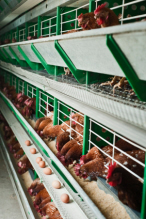Food, glorious food
- Details
 Aimee Fox provides an update on new regulations on school lunches.
Aimee Fox provides an update on new regulations on school lunches.
Nutritional standards for school lunches have come a long way since they were introduced in the 1940s. There has been intense media focus and increased scrutiny of the quality of food being served in schools throughout the country. Campaigns involving celebrity chef, Jamie Oliver, have garnered much attention. In April 2012, the founders of Leon restaurants at the invitation of ex Education Secretary were invited to undertake an independent review of food served in school. Susan Jebb, Professor of Diet and Population Health at Oxford University led the creation of the new standards.
The School Food Plan encapsulated their proposals and a government consultation took place from March until April 2014. As a result of the findings of the consultation, The Requirements for School Food Regulations 2014 (SI 1603/2014) were published in June and will come into force on 1 January 2015.
The Education (Nutritional Standards and Requirements for School Food (England) Regulations 2007 which will be revoked were often seen as complex and overly bureaucratic. According to the Deputy Prime Minister, “The revised school food standards will allow schools to be more creative in their menus. They are easier for schools to understand and crucially they will continue to restrict unhealthy foods to ensure our children eat well.”
Governing bodies are responsible for ensuring the standards are met and the regulations will apply to local authority maintained primary, secondary, special schools, pupil referral units and academies which entered into agreements between September 2010 and June 2014. Other academies and free schools are being encouraged to sign up on a voluntary basis.
The requirements include the following provisions:
Lower fat milk and lactose reduced milk must be available every day.
Fruit juice must not contain any added vitamins or minerals. However fruit juice which complies with Schedule 2 and Schedule 3 of the Fruit Juices and Fruit Nectars (England) Regulations 2013 is allowed.
At least one portion of either bread, pasta, noodles, rice, potatoes, sweet potatoes, yams, millet or cornmeal must be provided every day. In addition to this three or more different types of these foods must be provided. It is worth noting that these cannot be made available as a single portion. Any type of bread without added fat or oil must be available every day.
At least one type of fresh, frozen, dried or canned vegetable should be available every day. At least one type of fresh, frozen, dried or canned fruit should be available every day. Three or more types of fruit and vegetable should be offered per week, these cannot be provided in a single portion. Importantly, the definition of ‘fruit’ includes a ‘fruit based dessert’ which should contain at least 50% fruit. The fruit based dessert should be offered at least twice per week.
Fresh, frozen, canned or dried meat and fish should be made available every day. Meat or poultry should be available at least three times per week. Importantly, ‘meat products’ may not be provided more than once per week in primary schools and twice per week in secondary schools. A meat product may be served if it is included in the list of reserved descriptions of Schedule 2 of the Meat Product Regulations e.g. Luncheon meat or sausage roll. If the product falls outside of this list, guidance is found by reference to the definition of ‘burger’ in Schedule 2 of the Meat Products Regulations, by way of example any beef meat product would need to contain 67% and any chicken meat product would require 55%. No economy burgers may be provided, that is a meat product containing less than 67% or 55% of beef or chicken respectively.
Oily fish must be provided every three weeks. Eggs, nuts, pulses and beans (other than green beans) and other non-dairy sources of protein should be available on three or more days per week.
The regulations also include a series of restrictions relating to foods which are high in fat, sugar and salt. Deep fried food and products which have been coated in batter or breadcrumbs must not exceed two portions per week. The same applies to pastry. Confectionary must not be provided and snacks are only to include nuts, seed, vegetables and fruit with no added salt or sugar. Salt cannot be added after the cooking process and condiments must come in sachets or individual portions no greater than one teaspoon.
The guidance sets out a number of examples when the School Food Regulations do not apply or won’t apply such as at religious or cultural celebrations and food preparation and cookery skills’ classes where the food will not be served as school lunch.
According to the Children’s Food Trust report compiled for the School Food Plan Panel, from a total of 35 schools, 90% of school cooks and 80% of caterers thought the revised standards were easier to understand than the current standards, while 80% of school cooks and caterers thought they would provide more flexibility.
Aimee Fox is a barrister at St Ives Chambers. She can be contacted on 0121 236 0863 or
































